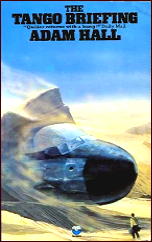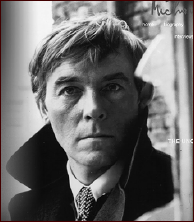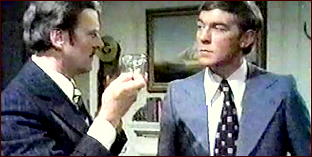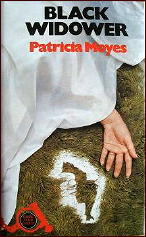Thu 6 Oct 2016
David Vineyard Reviews Two JAMES PATTERSON “BookShots” Novels.
Posted by Steve under Reviews[4] Comments
EMILY RAYMOND – Little Black Dress. BookShots, paperback, July 2016.
ANDREW HOLMES – Hunted. BookShots, paperback, September 2016.
To begin with, before anything else is said, the idea behind this series of books under the James Patterson byline is a good one; to provide a series of short novels that can be read quickly, running from forty to sixty thousand words, filling the gap left when paperbacks blew to disproportionate lengths because of high prices. In that it isn’t unfair to think of these in terms of most books published in the fifties and sixties in paperback, paperback originals especially, like the Carter Brown books at Signet, Michael Shayne and Johnny Liddell at Dell, and many suspense and Western volumes at Gold Medal.
James Patterson Bookshots are long novellas and short novels published in uniform trade paperback editions running in the $5.99 range, and written under the Patterson byline by mostly young unknown writers. Most feature original characters, although there has been at least one Alec Cross book (Cross Kill), a sequel to Zoo, and one featuring the Women’s Murder Club (The Trial). So far the books fall into the categories of Thrillers, Romance, and James Patterson Bookshots Flame series which are racier romance novels.
Emily Raymond’s Little Black Dress is published and sold with the thrillers, but for no reason I can see. Coming in at a slender 108 pages it’s the story, told in the first person for most of the book, of Jane Avery, a book editor in New York who spends her nights alone until she buys the little black dress of the title.
That dress soon changes her life as she becomes more adventurous and flirtatious embarking on a series of increasingly risky sexual adventures until she comes up missing and her panicked sister comes looking for her.
Now I admit that sounds like it might have potential to be anything from a solid Mignon G. Eberhart mystery suspense novel to a dark Woolrichian glimpse of desperate women trapped by fate.
It’s not.
The telling is achingly flat. According to her biography, Emily Raymond has penned two books with Patterson and ghosted numerous young adult novels. If so, I am not very enthusiastic about looking any of them up. Little Black Dress takes most of its length detailing a number of dull and obvious sexual escapades that are too boring to be porn and too graphic and uninvolving to be romance.
It picks up briefly when Jane fails to come into work one morning and her increasingly worried sister panics, only to find Jane in the most outright stupid predicament you can imagine, having learned her lesson and in a final even more pointless chapter returning the little black dress of the title to the store (and no one would want it after Jane was through with it) as she meets the handsome and wholesome new doorman at her apartment building.
Not only isn’t it a novel, it’s barely a story– just a series of uninteresting sexual escapades that wouldn’t titillate a convent school teen, an anti-climactic climax, and a rushed finale that seems to suggest it’s fun to be a bad girl but you wouldn’t want to make a thing of it after a guy into B&D handcuffs you to a radiator and forgets to let you free.
I can only say if this is the quality of Ms. Raymond’s young adult fiction I feel sorry for young adults. A Thriller it is not. It’s barely a vignette.
Hunted by Andrew Holmes is a different matter. It seems to be the author’s first published work, and while it is in no way original, it is well enough written, and proceeds at a pleasantly suspenseful pace reminiscent of an episode of a sixties or seventies episode of the Saint, the Persuaders, or the Baron.
David Shelly is a special forces type sent undercover by Clairidge of MI5 to investigate a mysterious high stakes game being played in the countryside where toughs from the city streets are being lured to play for their lives in yet another variation of Richard Connell’s oft copied tale “The Most Dangerous Game.â€
It’s Geoffrey Household, P.M. Hubbard, Allan MacKinnon, and Victor Canning country, hardly as assured or as deep as those writers, but still fun. The length is ideal (140 pages) and it is written with an eye toward keeping the plot moving.
Shelly is ex-SAS with a wife and a need for money and soon finds himself dealing with the duplicitous Tremain and the beautiful bloodthirsty Claire. The plot moves smoothly, and the only real complaint I have might be that it is all a bit timid, in need of a more assured hand willing to go where this sort of thing needs to go to be fully satisfying instead of resembling a novelization of a television episode. The plot would have fit Bulldog Drummond or Jonah Mansel well enough, but I can’t help thinking even they would have been less timid in the telling of it. John Creasey likely did write it, but much better.
The idea of the series is good, my only caveat being that the writing lacks the kind of energy the best of its fore bearers had. You find yourself missing that sleazy, slightly tacky, but assured voice that the best paperback originals used to have, and while $5.99 is a cheap enough price these days it certainly seems back when the same books cost 35 to 60 cents you got a lot more bang for your buck.
To be honest I found these marked down to $3.98, or I wouldn’t have bought them then, but I’m glad, at least, I read the Holmes. Whatever its flaws it was nice just once to read a thriller that hadn’t been puffed out to four hundred pages of extraneous prose.




